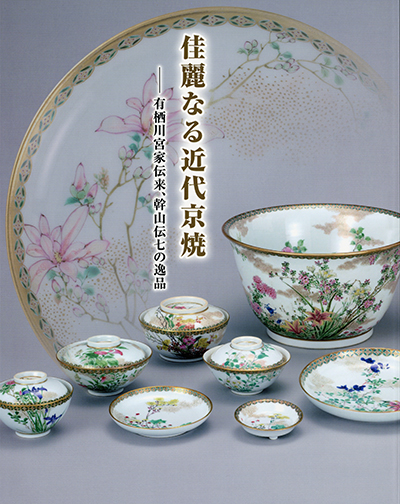| image | information |
|---|---|
 |
Kyoyaki (Kyoto-style ware) has been known as a symbol of the elegant early modern culture of the former capital, from their magnificent polychrome glazed wares. Even after the capital was transferred to Tokyo after the Meiji Restoration, many master craftsmen appeared, making Kyoyaki quite significant among modern ceramic history. Kanzan Denshichi is one of the most prominent craftsmen among the Kyoto ceramic industry in the early Meiji era. Kanzan Denshichi(1821-1890) was born in a potter family in Seto, who moved to Kyoto in the end of the Edo period, after working at a Koto ware kiln, which was the Hikone Domain kiln. After the Meiji Restoration, he was the first in Kyoto to specialize in porcelain, and ushered a new phase into traditional Kyoyaki, by constructing a large scaled workshop and actively adopting western colored glaze. In a short time, Kanzan's polychrome porcelain became popular, being purchased by the Imperial Household Ministry, and also received high appraisal at international expositions. A set of Japanese tableware by Kanzan is included among the art works that were donated to our museum from the late Prince Takamatsu Family in 2005. The set has 12 types of vessels totaling to approximately 600 items, including bowls, sake wine bottles, soup bowls, sencha green tea bowls, baked food plates, cake plates, etc. Each piece has realistic and brightly colored designs of flowers and grasses of the four seasons. Estimating from the period Kanzan was active, these were probably produced all together ordered by the Prince Arisugawa Family in the early Meiji era. The elaboration of each piece, and the delicate painting of the designs show the highest quality of Kyoyaki techniques of the time, and can be considered as tableware combining beauty and utility. Recently, Japanese craft works of the Meiji era are spotlighted again due to their excellent technical skills. We hope this will be an opportunity to become aware of the charm of modern Kyoyaki, through these many beautiful pieces newly added to the superb Meiji works, introduced in this exhibition. |